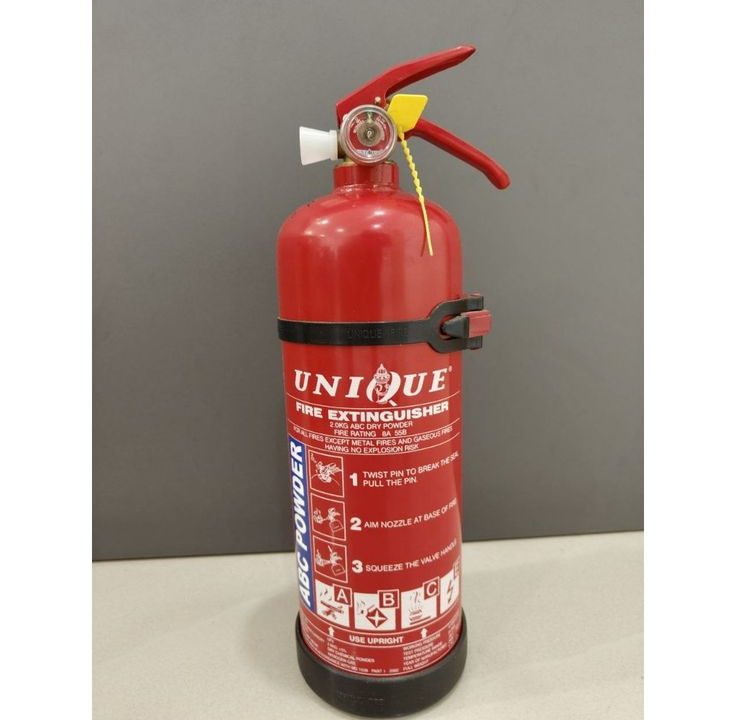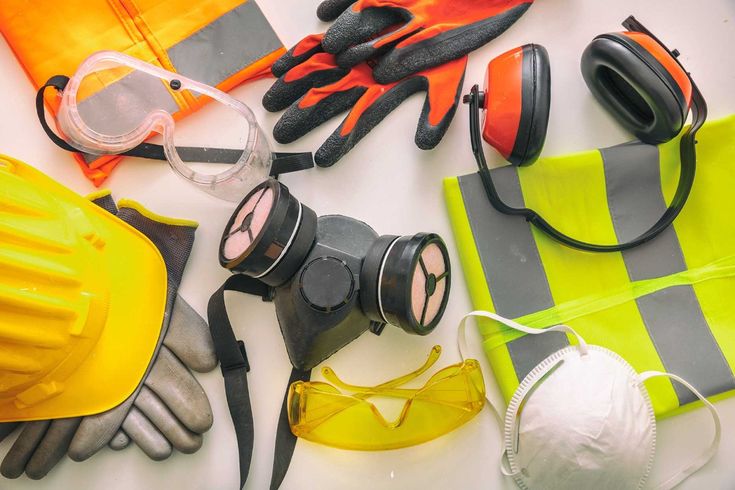Ergonomic Hand Protection Equipment: Enhancing Safety and Comfort on the Job

Buy Safety Equipment – Why Investing in Quality Safety Gear Is Crucial for Your Health
December 2, 2024
How Body Protection Equipment Can Prevent Serious Injuries at Work
December 23, 2024In today’s dynamic work environments, the emphasis on workplace safety has never been more critical. Among the myriad of safety measures, hand protection equipment plays a pivotal role in safeguarding workers from potential hazards. However, it’s not just about protection; comfort and usability are equally significant.
Ergonomic hand safety tools bridges the gap, ensuring that safety gear is both effective and user-friendly. In this comprehensive guide, we will delve into the nuances of ergonomic hand safety, its importance, and how it enhances both safety and comfort on the job.
Key Takeaways
- Ergonomics improves productivity: Comfortable and well-designed gear enhances efficiency by reducing fatigue.
- Customization is crucial: One-size-fits-all gloves are inadequate for diverse workplace needs.
- Material selection matters: High-quality materials ensure both protection and durability.
- Training boosts effectiveness: Workers need to understand proper usage and maintenance.
- Proactive replacement policies prevent accidents: Regular inspection and timely replacement of worn-out gloves are essential.
Understanding Ergonomics in Hand Protection
What Is Ergonomics?
Ergonomics is the study of designing tools, equipment, and environments to fit the user’s physical needs and capabilities. When applied to protecting hands, ergonomic gloves are specifically engineered to reduce strain, prevent injuries, and encourage natural hand movements.
By aligning with the anatomy and function of the human hand, these gloves minimize discomfort, ensuring that workers can perform tasks efficiently and comfortably without compromising safety.
The Importance of Ergonomic Design in Safety Gear
Traditional safety gloves prioritize protection but often neglect the user’s comfort and functionality. In contrast, ergonomically designed gloves provide a balanced approach by addressing both protection and ease of use. Key benefits of these advanced gloves include:
- Enhanced dexterity: Enabling precision in intricate tasks.
- Reduced risk of musculoskeletal disorders (MSDs): Supporting proper hand posture and reducing repetitive strain.
- Improved grip strength: Offering better control and efficiency without adding unnecessary bulk.
Ergonomic hand protection is crucial for industries requiring prolonged glove use, such as construction, manufacturing, and healthcare. By integrating comfort and functionality, these gloves contribute to worker safety, productivity, and overall well-being.
The Importance of Ergonomic Hand Protection
In the workplace, safety and productivity go hand in hand. One often overlooked yet vital aspect of workplace safety is proper hand safety. Hand protection gloves not only prevent injuries but also enhance overall performance and comfort for workers. Here’s why it matters.
Preventing Injuries
Workplace injuries, such as cuts, abrasions, and repetitive strain injuries (RSIs), can significantly disrupt operations and reduce productivity. Safety gloves are designed with a precise fit and flexibility to mitigate these risks, providing essential protection against potential hazards.
Reducing Fatigue
Ill-fitting gloves can lead to discomfort and muscle fatigue, which negatively impact workers’ performance. Safety handwear minimizes strain on muscles and joints, enabling workers to carry out their tasks for extended periods without discomfort or decreased efficiency.
Boosting Compliance
Comfort is key to ensuring safety gear is consistently used. Workers often avoid wearing uncomfortable gloves, increasing their risk of injury. Ergonomically designed gloves promote compliance by being more user-friendly and tailored to workers’ needs.
Investing in ergonomic hand protection and safety ensures a safer and more productive work environment. By prioritizing comfort and functionality, employers can protect their teams and enhance operational efficiency.
Features of Protective Handwear
Safety handwear is designed to enhance safety, comfort, and performance in the workplace. By incorporating innovative materials and thoughtful designs, these gloves cater to workers’ needs, ensuring maximum efficiency and reduced risks. Here are the standout features of such hand safety tools:
- Anatomical Fit
Safety gloves are shaped to follow the natural contours of the human hand. This design minimizes pressure points, offering superior comfort and flexibility, especially for tasks requiring precision and dexterity.
- Lightweight and Breathable Materials
Manufactured using advanced materials like microfiber and mesh, protective gloves ensure breathability and durability. Their lightweight nature prevents overheating, promoting all-day wear without discomfort.
- Specialized Grip Patterns
Textured surfaces or coatings, such as nitrile or polyurethane, enhance grip in challenging conditions, including wet or oily environments. These features maintain safety and precision, making them ideal for various tasks.
- Adjustable Features
Ergonomic gloves often feature adjustable wrist closures for a secure fit. This prevents slippage, keeps debris out, and ensures the gloves stay comfortably in place during prolonged use.
- Impact Protection
For high-risk tasks, safety gloves include additional padding or reinforced knuckles to protect against impact injuries. These enhancements provide robust protection without sacrificing the flexibility needed for efficient work.
By prioritizing features like comfort, grip, and protection, safety gloves create a safer, more productive workplace. They exemplify how thoughtful design can elevate safety standards while enhancing overall usability.
Applications of Ergonomic Hand Protection
Safety handwear plays a critical role across various industries, offering comfort, safety, and enhanced productivity. Here are some key applications:
- Construction Industry
Construction workers are exposed to heavy tools, sharp objects, and rough surfaces. Protective gloves with reinforced palms and fingers help prevent cuts and enhance grip, ensuring workers can handle equipment safely and efficiently.
- Healthcare Sector
Healthcare professionals spend long hours performing repetitive tasks such as administering injections and handling patients. Ergonomically designed gloves reduce hand fatigue and improve comfort during extended use, enabling workers to focus on providing care.
- Manufacturing and Assembly Lines
In manufacturing environments, workers face risks of repetitive strain injuries from continuous motion. Ergonomic gloves tailored for repetitive tasks minimize strain, enhance dexterity, and improve overall efficiency, preventing long-term health issues.
- Oil and Gas Industry
The oil and gas industry requires gloves that offer exceptional grip and chemical resistance. Protective gloves with nitrile coatings are ideal for such harsh environments, providing both comfort and protection against chemicals and hazardous materials.
- Food Processing
In food processing, hygiene is paramount. Ergonomic disposable gloves ensure compliance with safety standards while offering comfort for workers during long shifts, enhancing productivity without compromising hygiene or safety.
These industries benefit from the specialized features of ergonomic gloves, making them an essential safety tool in high-risk environments.
Factors to Consider When Choosing Ergonomic Hand Protection
When selecting safety handwear, it’s important to consider various factors to ensure safety, comfort, and performance. Here are key considerations:
- Task-Specific Requirements
Different tasks require different levels of protection. For heavy-duty work, gloves with reinforced palms are ideal for handling sharp or heavy objects. Precision tasks may require thinner, more tactile gloves to maintain dexterity and control.
- Material Selection
The material of the gloves significantly impacts their performance:
- Nitrile: Offers excellent chemical resistance, ideal for handling hazardous substances.
- Leather: Known for its durability, perfect for abrasive tasks.
- Kevlar: Provides exceptional cut resistance, ideal for high-risk environments.
- Latex: Highly flexible, offering sensitivity for delicate tasks.
- Comfort and Fit
Proper sizing is crucial. Gloves should fit snugly but allow for freedom of movement. Workers should try on gloves before purchasing to ensure they are both comfortable and flexible, minimizing discomfort during extended use.
- Compliance with Standards
Ensure gloves meet relevant regulatory standards like OSHA or EN 388. Certified gloves provide assurance of reliable protection against specific hazards.
- Durability and Maintenance
Choose gloves that are durable enough for the tasks at hand and easy to maintain. Reusable gloves should be washable and able to withstand the demands of your workplace.
Training and Implementation
Effective training and implementation of protective handwear are essential for ensuring safety and optimizing glove usage in the workplace. Here are key aspects to consider:
Educating Workers
Training programs should focus on the importance of ergonomic gear to protect hands. Workers need to understand how proper protective handwear reduces the risk of injury and enhances comfort.
Programs should also cover techniques for properly wearing and removing gloves to avoid contamination and ensure a secure fit. Additionally, workers should be educated on how to maintain gloves to prolong their lifespan and effectiveness.
Encouraging Feedback
Gathering feedback from workers is crucial for identifying the most comfortable and effective gloves for different tasks. Periodic surveys and glove trials help ensure that the selected gloves meet the needs of the workforce and provide continuous improvement in safety standards.
Establishing Policies
Employers should establish clear policies for glove usage, ensuring consistency and safety. These policies should include guidelines on when to replace gloves, how to properly dispose of damaged gloves, and how to maintain gloves for reuse when applicable.
Clear procedures promote compliance and help workers understand the importance of using gloves correctly to maximize safety and comfort.
Challenges and Solutions
Implementing protective handwear can present some challenges, but with the right strategies, these obstacles can be overcome.
Challenge 1: Cost Concerns
High-quality gloves may come with a higher initial cost. However, investing in premium gloves can significantly reduce injury-related costs and improve overall productivity in the long run.
Solution: Focus on the long-term benefits, such as fewer workplace injuries and reduced downtime, to justify the investment in better safety gear.
Challenge 2: Resistance to Change
Workers may be reluctant to switch to ergonomic gloves, as they are accustomed to old, familiar designs.
Solution: Introduce safety gloves gradually and emphasize their benefits through training sessions. Demonstrating how these gloves improve comfort and reduce injury can encourage acceptance and adoption.
Challenge 3: Diverse Needs
A one-size-fits-all approach often doesn’t work for protective gloves, as different tasks require different types of protection.
Solution: Offer a range of glove options designed for specific tasks and preferences. Providing various sizes, materials, and features ensures that all workers can find gloves that meet their individual needs and job requirements.
Innovations in Hand Safety Equipment
The field of protective handwear has seen significant advancements, with new technologies and materials enhancing both comfort and safety. Here are some of the latest innovations:
- Smart Gloves
Smart gloves are equipped with integrated sensors that track hand movements and provide real-time feedback to improve ergonomics. These sensors can detect improper hand positioning or excessive strain, alerting the wearer to adjust their posture or technique.
This innovation helps prevent repetitive strain injuries (RSIs) by ensuring that workers maintain optimal hand positions throughout their tasks, contributing to long-term health and productivity.
- Advanced Materials
The development of new materials is transforming these gear. Nanotechnology is being used to create ultra-durable gloves that are lightweight and flexible while maintaining superior strength.
Additionally, the use of biodegradable materials is gaining traction, allowing manufacturers to produce gloves that are not only tough and reliable but also eco-friendly. These materials help reduce the environmental impact of disposable gloves, aligning safety with sustainability.
- Custom-Fit Gloves
As the demand for personalized solutions increases, manufacturers are turning to 3D scanning technology to create custom-fit gloves tailored to the unique dimensions of an individual’s hands.
This innovation ensures a perfect fit, providing greater comfort, improved dexterity, and a reduced risk of hand fatigue. Custom-fit gloves can also reduce the occurrence of pressure points, enhancing both protection and performance.
Conclusion
Hand protection equipment is essential for workplace safety, offering a combination of comfort and functionality. By prioritizing ergonomically designed gloves, organizations can reduce injuries, improve productivity, and boost worker satisfaction.
These gloves are not only a preventative measure against injuries but also enhance comfort, allowing workers to perform tasks more efficiently. Investing in the right gear today leads to a safer, more productive, and sustainable workplace tomorrow.
The benefits of ergonomic tools go beyond safety, creating an environment where both workers and organizations thrive.
FAQs
- What are ergonomic gloves?
These gears are designed to reduce strain, enhance comfort, and promote natural hand movements. They minimize fatigue and improve efficiency by aligning with the hand’s anatomy.
- Why is ergonomic hand protection important?
It prevents injuries, reduces muscle strain, and encourages workers to wear safety gear consistently, leading to a safer work environment.
- How do I choose the right ergonomic gloves?
Consider the task requirements, materials, fit, and compliance with safety standards. Always prioritize gloves that offer both protection and comfort.
- Are ergonomic handwear expensive?
While ergonomic handwear may have a higher upfront cost, their durability and ability to prevent injuries make them cost-effective in the long run.
- Can ergonomic gloves improve productivity?
Yes, these gloves reduce fatigue and discomfort, allowing workers to focus on their tasks and maintain higher productivity levels throughout the day.




